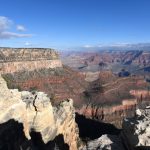The Earth has four main layers: inner core, outer core, mantle, and crust. “With a radius of almost 3,500 km (2,200 miles), Earth’s core is about the size of the entire planet Mars. About one-third of Earth’s mass is contained in the core, most of which is liquid iron alloyed with nickel and some lighter, cosmically abundant components (e.g., sulfur, oxygen, and, controversially, even hydrogen),” writes Britannica.
The Earth’s inner core is thought to be rotating faster than the Earth’s surface and this week scientists have published a study in the journal Nature Geoscience showing the core may have stopped rotating around 2009 and then restarted but in the opposite direction. “We show surprising observations that indicate the inner core has nearly ceased its rotation in the recent decade and may be experiencing a turning-back,” the study says. “When you look at the decade between 1980 and 1990 you see clear change but when you see 2010 to 2020 you don’t see much change.”
The inner core is rotating due to the planet’s overall rotation and the movement of molten iron in the outer core. According to Xiaodong Song and Yi Yang of China’s Peking University, who lead the study, the core has a rotation pattern that changes every 70 years. “We think that the core is, relative to the surface of the Earth, rotating in one direction and then the other, like a swing,” they said, adding that the “gradual turning-back of the inner core is part of an approximately seven-decade oscillation”.
“These observations provide evidence for dynamic interactions between the Earth’s layers, from the deepest interior to the surface, potentially due to gravitational coupling and the exchange of angular momentum from the core and mantle to the surface. We hope that our research motivates researchers to design and test models treating the Earth as an integrated dynamic system,” wrote the researchers.
On the other hand, Hrvoje Tkalcic, a geophysicist at the Australian National University and others claimed the study is likely incorrect, stating that “the geophysical community will be divided about this finding and the topic will remain controversial.”
Source: newatlas.com










